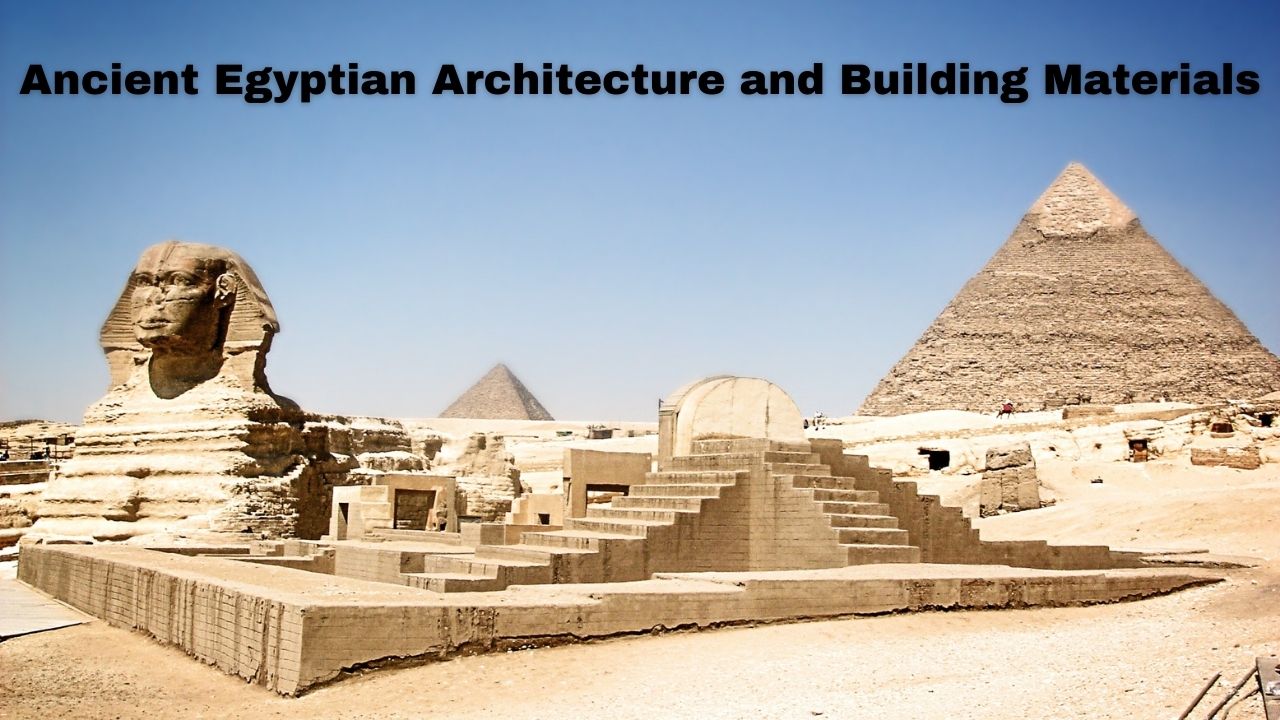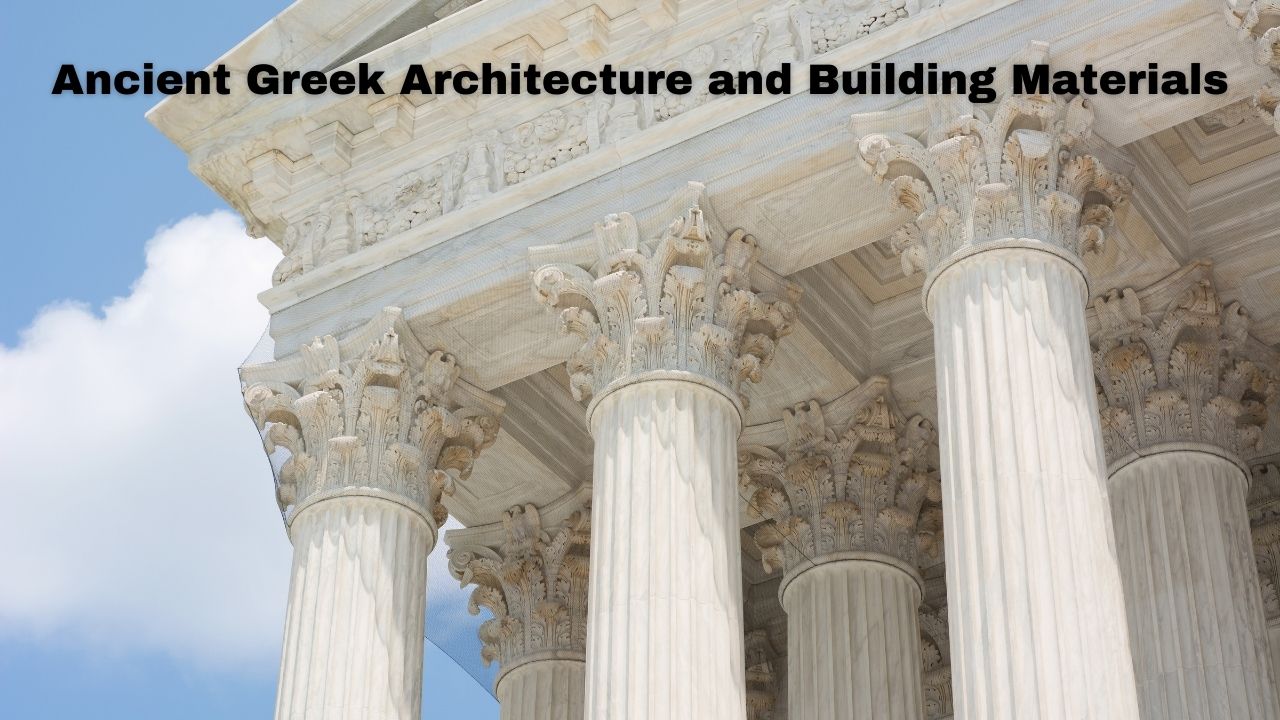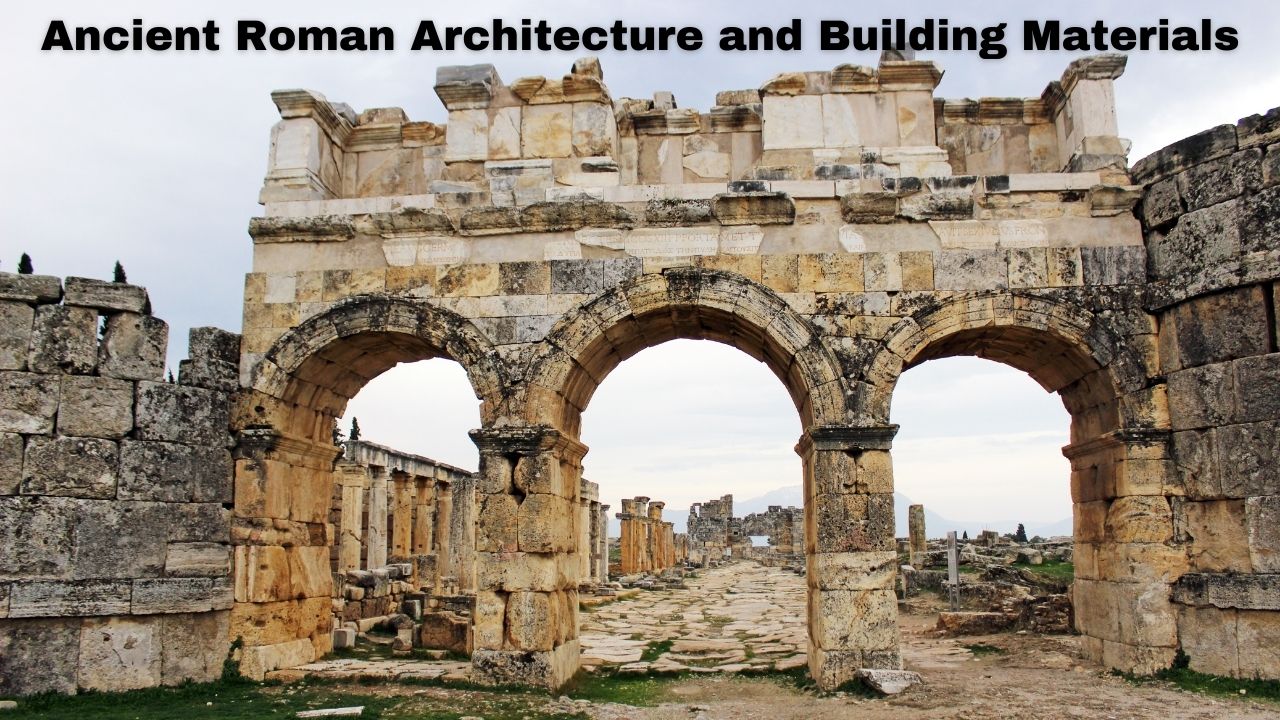Geological Impact on Ancient Architecture and Ancient Building Materials
Architectural designs of buildings have developed from the past to the present with trial and error. Many construction materials have been used in ancient buildings as a result of these trials. You have seen how the Egyptian Pyramids, the most well-known structures of ancient architecture, have developed over time from their 5-6 steps in many written and visual media. In this article, we will review the preferred building designs and materials used in ancient architecture with you.

Ancient Egyptian Architecture and Building Materials
In ancient Egypt, the pharaoh wanted to be as close to the sky as possible to ensure his afterlife. The story of the construction of the Egyptian Pyramids begins in this way and it is thought that the natural one, namely the mountains, was taken as a model for a structure as high as possible. It is known that the stones used in the pyramids are limestones formed 50 million years ago.
Limestone Usage
Limestones were formed when creatures such as corals, microscopic plankton, and shellfish that lived in the Tethys Ocean died and settled on the seabed and material was deposited on them. The materials deposited on the sea floor for millions of years are compressed over time and as a result of tectonic movements, the floor of the Tethys Ocean rises and limestone, a type of sedimentary rock, emerges.
Limestone, which has a stratified structure, is one of the most suitable materials for the construction of pyramids. As the steps are placed on top of each other, the limestone at the base can withstand this high pressure. The Pyramid of Cheops, the largest pyramid, has a base edge length of 230 meters and a height of just over 138 meters today.
Inside this huge 2.6 million m³ volume structure, there are ventilation ducts and ventilation ducts connected with rooms that are quite small compared to the structure itself. The dimensions of the king’s chamber, the largest room, are 10.5 meters x 5.2 meters x 5.8 meters.
The Egyptians wanted to build more different architectural structures and the biggest example of this is the Karnak temple complex. It was observed that the structures in this open-air museum were made of sandstone. When the Egyptian engineers wanted to make these structures rectangular and place a roof on top, they were sainted with sandstone. When they wanted to erect high columns and place beams on them, they saw that the sandstone crumbled under pressure.
The most practical solution to this problem is that instead of erecting the sandstones as a single column, they made them piece by piece and placed them on top of each other. When they wanted to put beams on the pillars, they met another problem and learned what stress is. Since this temple to the gods had to be big and high in order to be as magnificent as possible, they increased the number of columns in order to prevent these stresses in the beams, and the room was filled with columns.

Ancient Greek Architecture and Building Materials
After the ancient Greeks declared the pyramids at Giza the first wonder of the world, they wanted to build a structure like this, but they did not have materials such as limestone that they could work with quickly. The Greeks wanted to build a structure like Karnak, but since they used wood to support the roofs in their architecture, they needed a suitable material to build such a structure.
Marble Usage
Seeing the architecture in Karnak, the ancient Greeks decided to build the Parthenon for all their gods and used marble, the most abundant metamorphic rock available. The manufacturing method of the outer columns of this 69m x 30m x 13m building was taken from the Egyptians.
Plate tectonics is the most important factor in the formation of marble. In subduction zones, the plate with high density goes under the plate with low density and transforms from sedimentary rock to metamorphic rock under high temperature and pressure. As a result of physical effects such as sedimentary rocks, which were weak in the hands of the Egyptians, becomes a more solid material that does not disintegrate immediately.
Since this material in their hands is resistant to tensile force, it is not filled with columns like Karnak. The smooth exterior of marble after processing was reflected in the artworks of the Greeks and they equipped their architecture with highly detailed sculptures.
They improved their columns and built sculptured columns instead of cylindrical ones. Likewise, the fact that marble is more robust than sedimentary rocks was reflected in the artworks of the Greeks and at the same time helped them to create more detailed works of art.

Ancient Roman Architecture and Building Materials
In the ancient Roman period, it is observed buildings were made of bricks. The best example of this is Trajan’s Market. These bricks made of mud and clay allowed them to build a modular architectural structure. In addition to these bricks, volcanic activities in the region are also important. As a result of the eruption of the volcanoes in the region, the whole region was covered with volcanic tuff.
The Romans, who mixed lime with tuff, had a material that the ancient Greeks and Egyptians did not have; concrete. The Romans, who made heated bricks from a mixture of clay and sand, combined these bricks with concrete obtained from a mixture of lime and volcanic tuff and obtained very strong walls and arch structures.
With their engineering and architectural developments, they built 70 km long aqueducts to meet the water needs of Rome and the Colosseum for social entertainment. With the arch structure, they lightened the load of the whole structure and distributed the loads. When the Pantheon in Rome is examined, it resembles the Parthenon built by the ancient Greeks for their gods when viewed from the front, but the building itself has a huge dome with a diameter of 43 meters.
The structure itself is made of basalt, not bricks made of mud and clay. But they need a lighter material for the manufacture and weight of the dome. We have mentioned that volcanic activity is high in the region and as the magma cools on the surface, it releases the gases inside and creates air cavities in the tuff. In this way, they naturally had the light material needed for the dome.
The geological structures in the regions where civilizations were established and the geological history of the regions had a significant impact on their architectural structures, building shapes, and the way they solved the problems they encountered during the manufacturing process.
Bir yanıt yazın